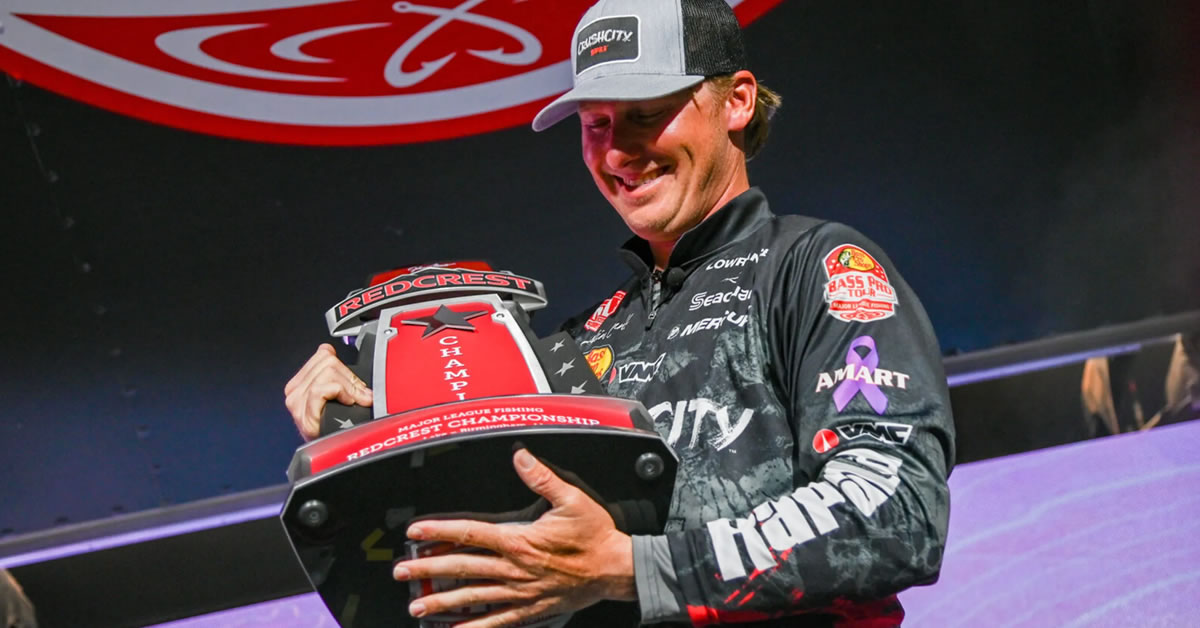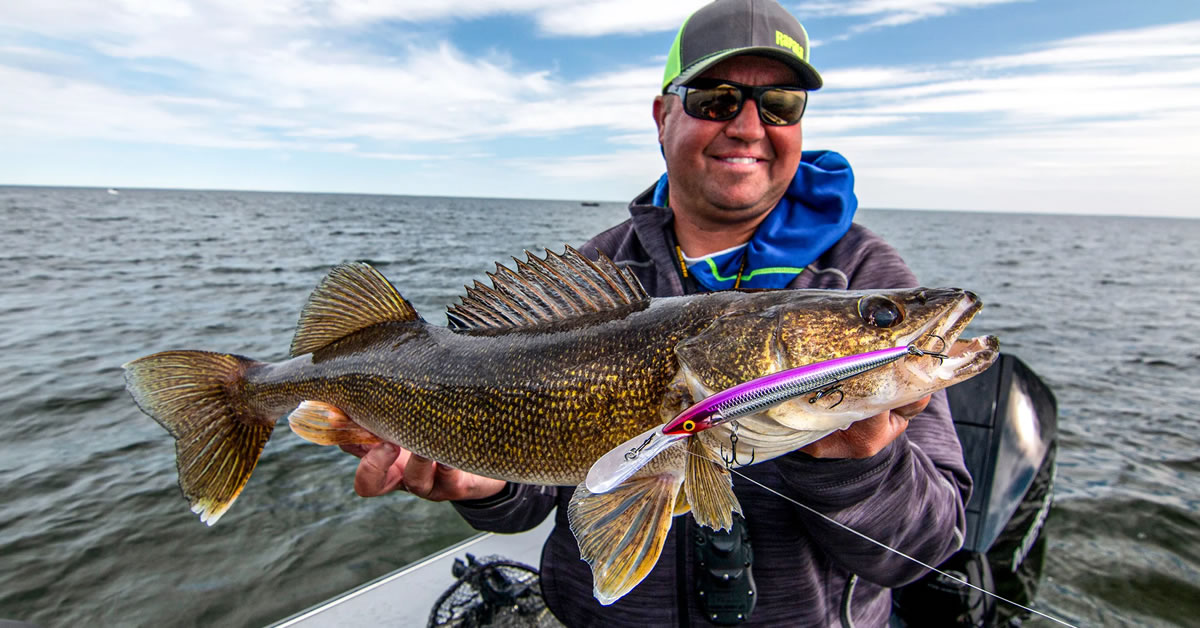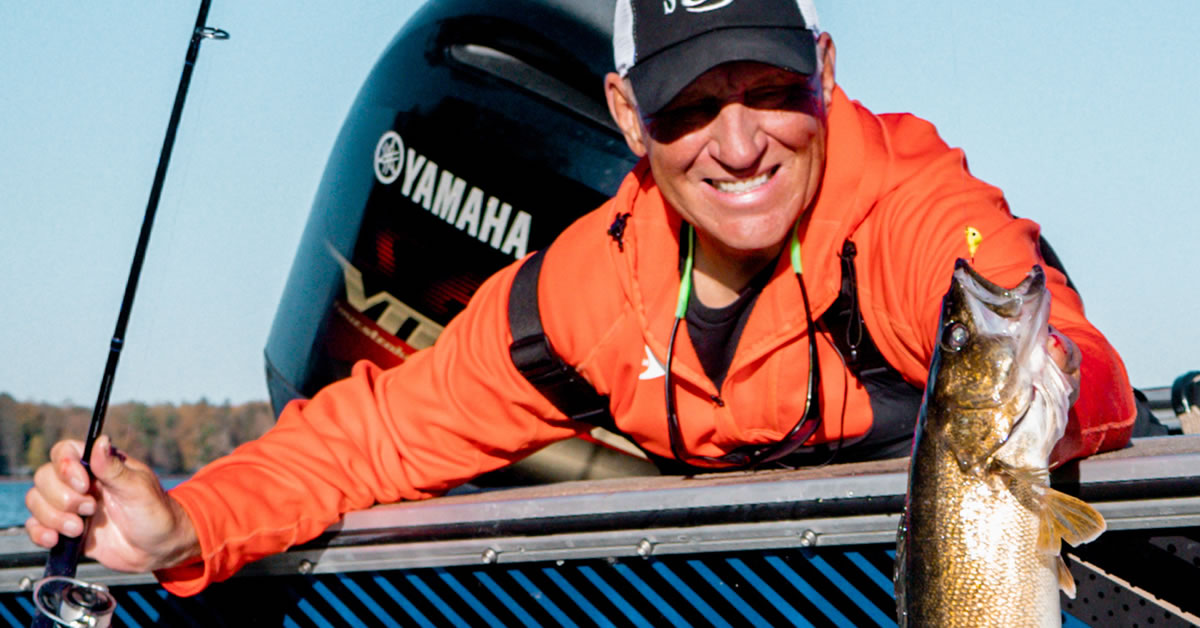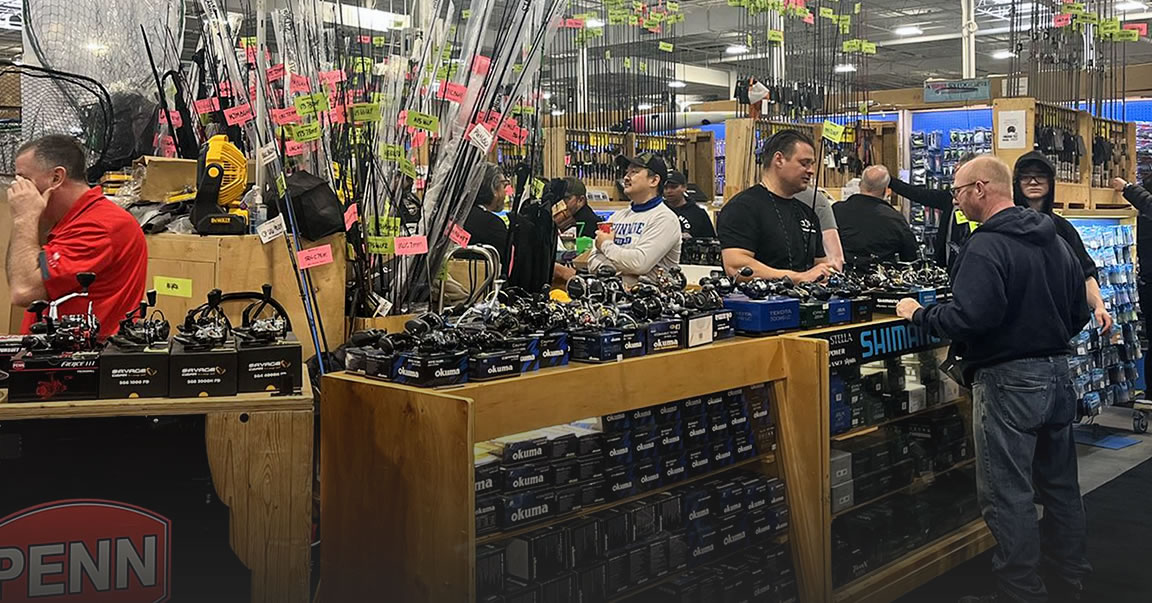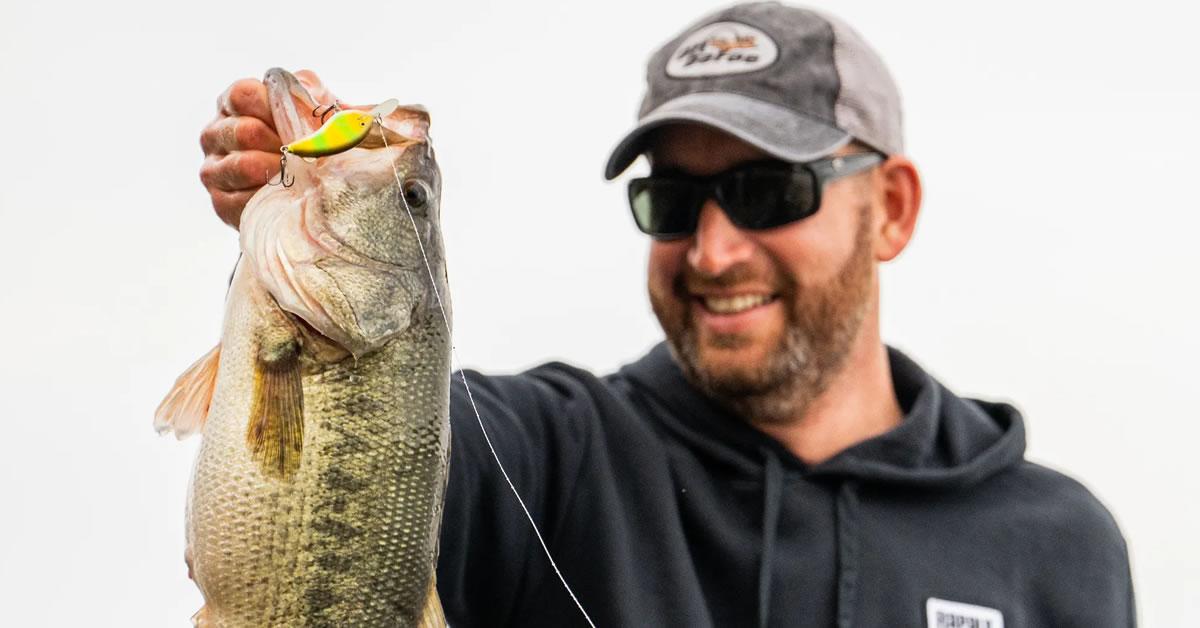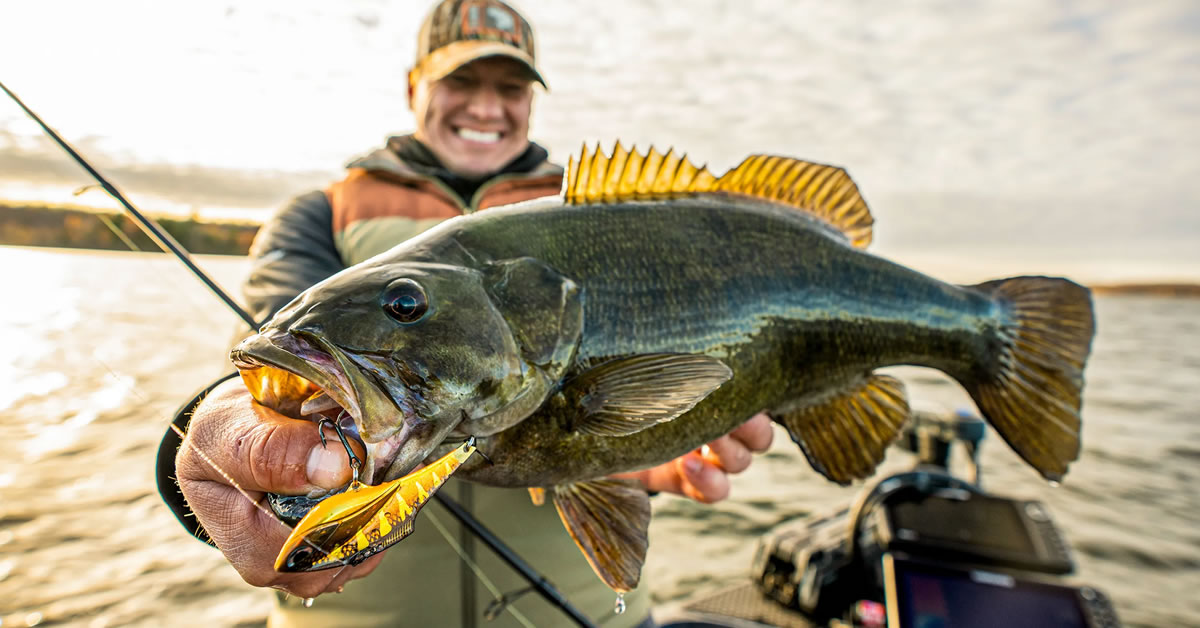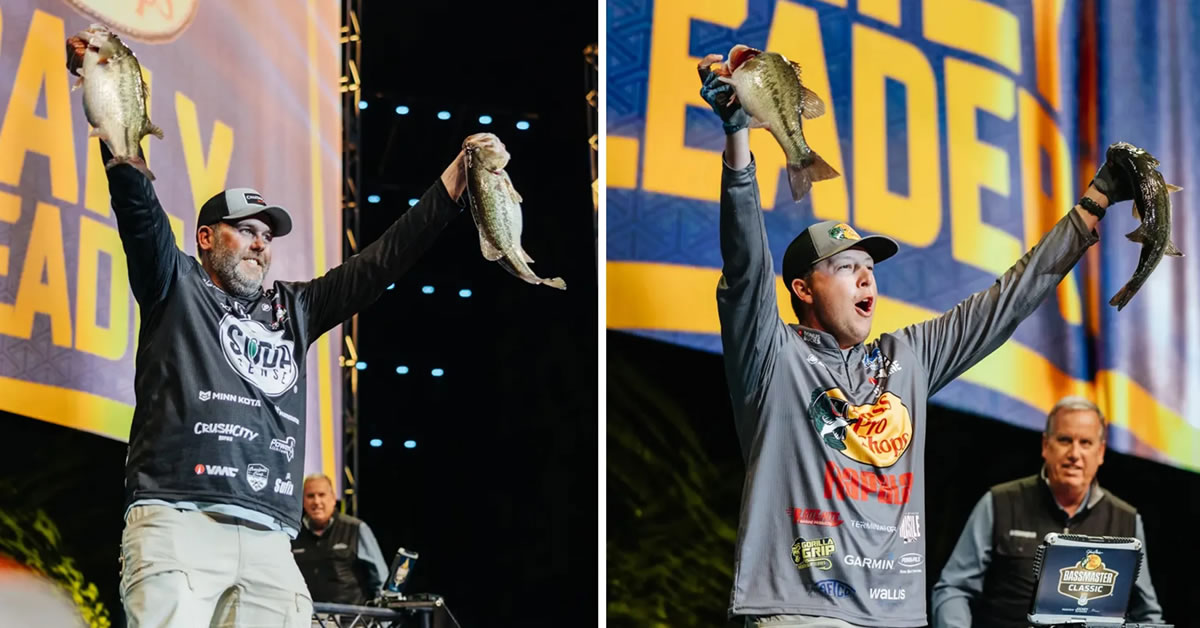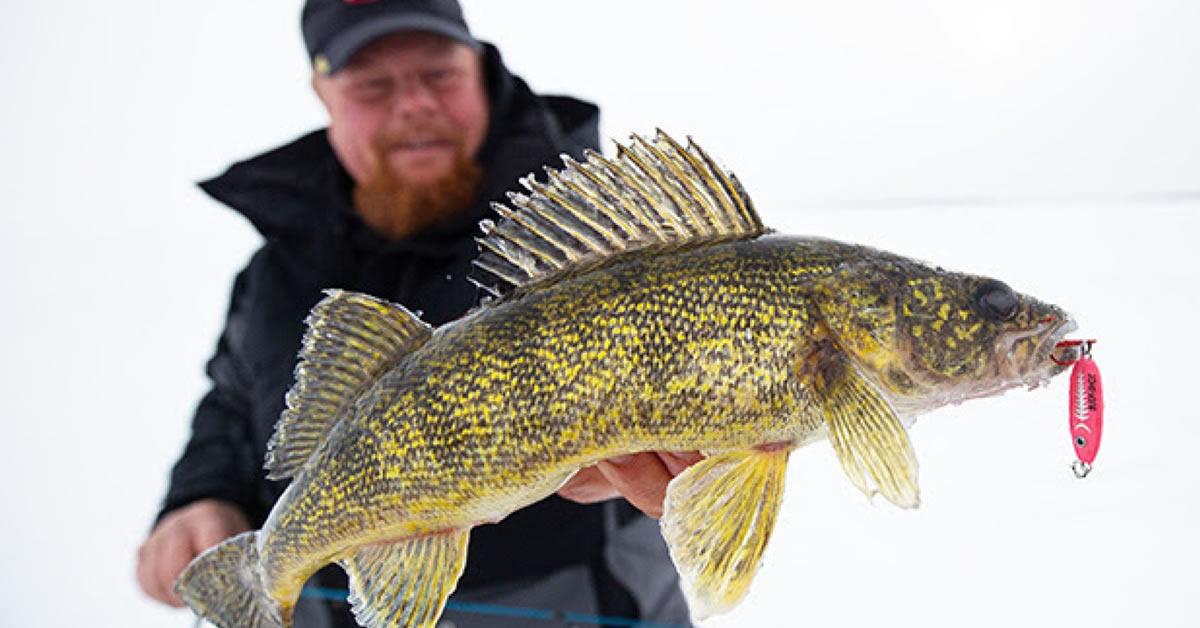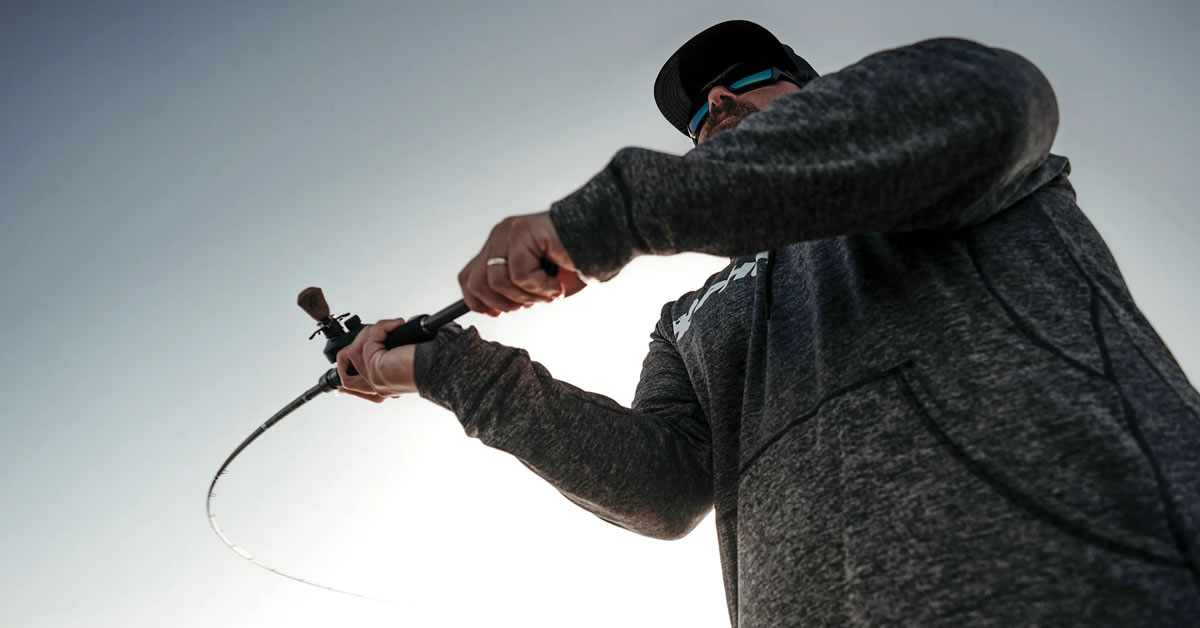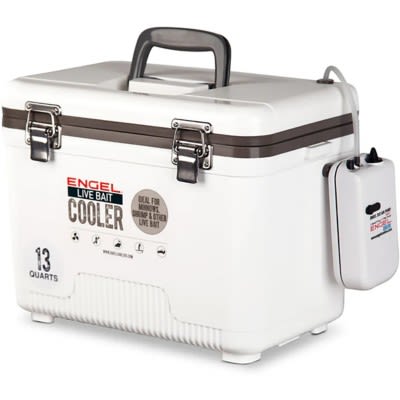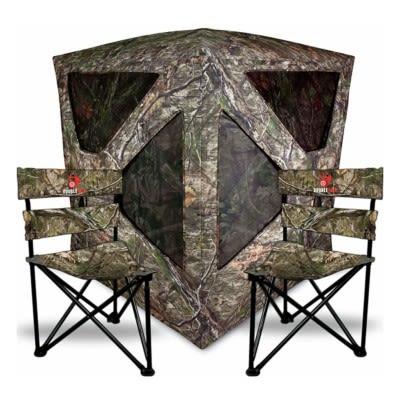Dock Shooting for Crappies

Chances are if you're a crappie angler you've at least heard of the technique called dock shooting. What exactly is it? It's a lethal way to catch fish in hard-to-reach places that's part dock skipping—which many of us know from bass fishing—and part archery, in that jigs are launched as projectiles into these spots from a loaded rod.
Putting the mechanics of dock shooting aside for a second, the first question anglers typically ask is why use the technique. Missouri-based crappie tournament angler Steve Seifert explains: "I started shooting docks about ten years ago and the reason I started doing it is there were a couple guys fishing tournaments who were just killing everybody and nobody could figure out what they were doing. Then one day I ran into them on the lake and saw them shooting docks. I immediately took up the technique and the amount of fish I caught and the size of the crappies I caught increased dramatically. I just couldn't believe it. I've been doing it ever since."
Seifert's occasional fishing partner and friend, Dan Johnston, National Accounts Manager with St. Croix Rods, is another dock shooting convert. "For years anglers used to skip baits under docks but dock shooting is just a lot more accurate. It's something I've been doing for about five years and catching a lot more fish. You can put the jig into places that it's really the only way you can get it there."
Their remarks aren't that unique. Ask any dock-shooting crappie anglers why they use the technique and they'll tell you they catch more and bigger crappies as a result.

Why It Works
First off, crappies are very structure oriented—and structure can be multi-faceted. It can be something physical but it can also be a shade line—and crappies are notorious for setting up on that type of scenario. And the thing about docks? They provide both types of structure—the physical and shade lines. The docks can be shallow or deep; they can be over 50 feet or 5 feet of water—and the stage of the fish movement will determine where the fish set up. So, obviously, a boat dock being a motel for all kinds of fish, they are a high percentage area to fish for crappies. Considering the structure they provide, the bait they attract, and the shade they provide, docks are the perfect application for dock shooting, which comprises an underhand-loaded rod that shoots jigs into places that are physically just impossible to reach with an overhand cast.Seifert comments: "Water temperature means a lot in crappie fishing—they seem to really get going as the temperatures start to increase and they seek out that shade. And they're looking for food, too—it's probably that more than anything. The shad and other minnows will hide in the shade so the shade lines provided by docks provide excellent ambush points for the crappies to feed. Even in the winter when the water temperature is down around 40 degrees on a nice sunny day you'll find crappies in the shade provided by docks. They might not be under the dock but they'll be in the shade off the dock. You'd think they'd be out in the warmth of the sun but they don't have eyelids so their physiology is part of it besides seeking out ambush locations to feed."
The beauty of dock shooting is your rod ends up preferably in a slightly ascended angle. That's advantageous for two reasons: 1) It levels the line going back in and under the dock, kind of like skipping a bass jig; and, 2) It puts you in a perfect position to start the retrieve because a lot of times crappies will hit the jig right away, especially on shallower docks.
"Once you do get the bait back there, crappies don't like baits jigged real aggressively—they prefer baits more on the slide. Sometimes less is more with crappies and that can be either a horizontal slide, a dead retrieve, or a stop and go type retrieve where the jig falls but it's falling at you. Most of the time, the crappies will come in level or up with the bait. If they move down to chase a bait, they'll move faster to level out and eat the bait. So it's critical to understand that's one reason we use monofilament because it's a floating line along with the Bobby Garland three-inch Slab Slay'R, which rides beautifully horizontally in the water because of its design. You also need to be cognizant of the fact that you don't want to start on the bottom with the bait. You always want to stay above the crappies with the jig as a rule of thumb for crappie fishing in general," says Johnston.
How to Do It: The Mechanics of Dock Shooting
"Dock shooting is like any other fishing technique. Once the word gets out, people start trying it. But there are a lot of people who've tried it who don't like it—they just can't get the hang of it. You have to have a little hand eye coordination to do it," says Seifert.
The best way to nurture that hand eye coordination? Practice, especially time spent off the water, as Seifert explains. "Before I even thought about shooting I did a lot of trying to skip baits under docks, but it's not nearly as accurate as this. Shooting, you can put a jig into places that you'll be amazed. I used to practice in my driveway shooting at soda cans and once I got to the point of hitting them one out of three, that's when my dock shooting really took off. I think that's why a lot of people don't stick with dock shooting. They just haven't spent enough time practicing to be accurate."
In terms of the mechanics of dock shooting, most anglers hold the rod in their dominant casting hand with the reel bail open, their dominant casting hand pointer finger on the line, and then grab the jig in the left hand between thumb and pointer finger, pick out the target, load the rod from an underhanded position, and then let the jig fly.
"If you look at the eyes on a jig, I'm holding that with my thumb and forefinger. When I do hold the line, I don't hold it up against the rod, I hold it maybe an inch and a half off the rod and just hope that the line doesn't stick to my finger and then release the jig. With practice, you get to the point of just looking at the target and letting the jig go," says Seifert.
He continues: "I hold the rod in my right hand with the bail open, my pointer finger on the line, then grab the jig, load the rod up, and let it fly. I try not to think about what I'm doing too much, instead trying to hit the opening under the dock. If you hit the opening without hitting the water first the jig really goes back a long way. And even if you hit the water, that's the nice thing about the three-inch Slab Slay'R jig body, it bounces back really well."
Required Gear
With regards to required gear for dock shooting, one of the most critical components is the right power and action spinning rod. Ultimately, dock shooting is a technique that requires very specific performance; not just any rod performs the way it needs to shoot docks effectively.
"About five years ago St. Croix's Dan Johnston hooked me up with a couple St. Croix AVID X rods to try and the first thing I noticed was how accurate they performed. Ultimately, I could take more chances and get into really tight spots and darker holes. Distance-wise, I was shooting about the same distance as the rods I had used before but the accuracy was just unparalleled. I really fell in love with the AVID X AXS66MLF 6'6" medium-light, fast action model, and the reason I haven't gone to the 6'9" that Dan uses is I'm so accurate and comfortable with the 6'6" I just don't want to change. I've got three of the 6'6" models rigged up for whenever I'm fishing a tournament and two when I'm just out fishing for fun. Another thing I like about the AVID X rod is it's got more guides and they're smaller than a fishing rod of a similar size. I think that's where the accuracy comes in."
As mentioned, Dan Johnston uses a similar rod, but slightly longer with a faster tip.
"The St. Croix AVID X AXS69MLXF 6'9" medium-light, extra-fast rod is my go-to rod for the technique. It's absolutely perfect. The fact that it's action is extra fast means you don't have to pull it back super far to get it to shut down and load right. The SCIII carbon material seems to provide the perfect deflection, protecting light line but also for shooting jigs a mile back underneath docks. It's really a sensitive blank, too, but in addition to that, the Kigan Z modified micro-guide platform lends itself to accuracy. I'm convinced that the fact that the guides are smaller and there are more of them just lends itself to much greater accuracy for dock shooting, which is critical. The entire technique is about extreme accuracy for getting baits into places that would be unimaginable. And if you don't have that in your set-up it's virtually impossible," says Johnston.
He continues: "There's a fine line in this between getting your jig way back in there, number one, but also getting it back in there accurately. It's one thing to shoot a jig a mile, but it's more important to hit your spot and then hope the jig goes in way back. The medium-light power, fast or extra-fast action rod is really the way to go."
Besides the right rod, a quality smaller- to medium-size spinning reel spooled with high-visibility six-pound monofilament is required. For both Seifert and Johnston, they tie the yellow monofilament directly to the jig, sans fluorocarbon leader.
Johnston remarks: "We get asked a lot why we don't use a fluorocarbon leader for dock shooting, instead tying high-vis monofilament all the way to the jig. The environments we're shooting jigs into is pitch black and full of cables, hoses, hoists, and other structure, that I would bet everything I own that crappies are not line-shy where we're putting the jigs. The fish are very opportunistic around docks unlike situations crappie fishing in high-pressured, gin clear water with limited structure where the fish will micro-analyze your offering."
When it comes to baits, both use Bobby Garland three-inch Slab Slay'R jig bodies on a variety of 1/16th-ounce jig heads. Seifert uses custom jig heads made by a local angler that he paints himself a combination of pink and pumpkin. When it comes to the jig body, Seifert says he almost never deviates from a white and chartreuse body. "When it comes to fishing tournaments, white and chartreuse is it. That's my winning dock shooting color combo," says Seifert.
Johnston concurs: "The Bobby Garland three-inch Slab Slay'R is my go-to bait. It's a big bait, which for obvious reasons is great. It's more of a boot tail slash spear tail so it skips great. It doesn't have a lot of appendages hanging off of it, which is critical. If you do hit the water you don't want something catching it and tumbling it down. This bait will skip way under a dock if it does hit the water."

When and Where It Works
Dock shooting is a technique that will work during the entire calendar year with a brief exception for when crappies move extremely deep during the coldest part of the winter. But even then, if there's an ample supply of baitfish in, around, and under docks, crappies can still be found near the manmade structures."I primarily fish crappies in the spring during their pre-spawn and spawn periods and then again in the fall and early winter," says Seifert. "But dock shooting will work the entire year, including summer, when fish have a tendency to set up on the dock shade lines. As far as working docks, crappies just seem to like the shade. Case in point is Lake of the Ozarks. I haven't seen another lake with as many docks. It's 90 miles of rivers and creeks and it's loaded with docks and I wouldn't even know how many we have but that's a lot of shade."
Besides the awesome crappie fishing to be had at Lake of the Ozarks, dock shooting will work just about anywhere you find docks, whether that's a lake, river, or reservoir. And while the technique was popularized and has become a staple in the South, that doesn't mean that waters in the North and other parts of the country won't produce. Still, a fair amount of patience is required when seeking out fish because not all docks are created equal. You may have to try a dozen docks before you find a structure that holds crappies.
"For me, another thing that's a lot of fun about dock shooting is finding the fish. They're not going to be under every dock. My favorite types of docks are big—the bigger the better. Like those with big concrete decks. And as I'm driving down the lake and I see a dock sitting by itself, I'm definitely going to fish it. You're always looking for docks near points and drop-offs or ledges underwater. Part of locating docks with fish is definitely sped up using today's sonar technology. For example, we'll use sonar side imaging to look at docks before we fish them—and it depends how many fish we see under a dock if we'll fish it or not. If side imaging shows a bunch of fish underneath it we typically stop and fish it. That can be a real time-saver."
Have Some Fun
Besides producing more and bigger crappies, both Seifert and Johnston say that dock shooting is just plain fun. "As far as I'm concerned, dock shooting is probably the most fun way to catch fish I can think of," says Seifert.That said, if you're looking for a new experience this season, get some dock shooting gear in order, invite a couple friends or family, and trailer your boat to the nearest waters with crappies and a multitude of docks. Of course, a little practice in the driveway shooting jigs first wouldn't hurt…





